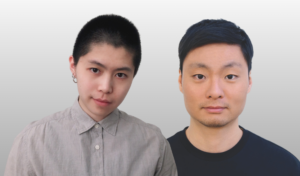
IDA 2024 Emerging Architectural Design of the Year
What sparked the idea for your award-winning project, and how did it take shape?
The project stemmed from a deep analysis of the site’s existing conditions and community needs. We identified a lack of green spaces and public amenities in the surrounding districts, particularly for children. This realization drove us to transform a dormant industrial zone into an engaging, sustainable environment where education, nature, and community life could intertwine. Through research, iterative design, and collaboration, the vision evolved into a vibrant space that fosters experiential learning and ecological awareness.
How does your personal style or philosophy influence your designs?
We believe in architecture as an active participant in people’s lives rather than just a static structure. Our design philosophy merges systematic logic with creative exploration, ensuring that spaces not only serve functional needs but also inspire interaction and discovery. In the Exploratorium, this philosophy is evident in the integration of green spaces within the built environment, creating a setting where children can engage in hands-on learning while interacting with nature.
What was the most challenging aspect of this project, and how did you tackle it?
One of the biggest challenges was balancing the project’s diverse functions—sustainability, education, and public engagement—without compromising spatial harmony. The valley form and layered programming required precise coordination between architectural form and environmental strategies. By leveraging computational design tools and conducting multiple iterations, we refined the layout to ensure efficient rainwater collection, seamless movement, and immersive green experiences.
Winning an International Design Award is a huge achievement—what does this recognition mean to you?
This recognition validates our belief that architecture can be a powerful tool for positive change. It reaffirms that thoughtful, community-driven design has the potential to reshape urban spaces in meaningful ways. Winning this award also inspires us to continue pushing the boundaries of sustainable design and human-centered architecture.
Can you share some insights into your creative process? Do you follow a structured approach or let inspiration lead the way?
Our process is a combination of structured research and open-ended exploration. We begin by analyzing site conditions, social context, and environmental factors to establish a clear design framework. However, we also allow room for inspiration—whether through sketches, physical models, or digital experiments—to uncover unexpected design opportunities. In this project, the valley form emerged through this balance of logic and creativity, resulting in a design that is both functional and engaging.
Did this project push you to explore new materials, techniques, or technologies?
Absolutely. The integration of vertical and step farming required us to explore new urban agricultural techniques and how they could be effectively implemented in a built environment. Additionally, we studied advanced rainwater collection systems and biophilic design strategies to enhance sustainability. This process broadened our understanding of how architecture can seamlessly incorporate ecological systems.
What role does sustainability play in your design work?
Sustainability is at the core of our approach. We see it not just as an obligation but as an opportunity to enhance spatial quality and community well-being. In the Exploratorium, sustainability is embedded in every aspect—from green roofs that support biodiversity to interactive farming elements that educate future generations on environmental stewardship. By designing spaces that promote ecological awareness, we contribute to a more resilient urban future.
What advice would you give to aspiring designers looking to make an impact in their field?
Stay curious and be fearless in your experimentation. The most impactful designs come from a willingness to explore new ideas, challenge conventions, and continuously refine your work. At the same time, develop a strong foundation in technical knowledge—understanding materials, structures, and environmental systems will give your creativity the tools to manifest real change.
How do you balance function, innovation, and aesthetics in your designs?
We see these elements as interdependent rather than competing forces. Functionality shapes the foundation, innovation challenges conventional solutions, and aesthetics create an emotional connection with the user. In the Exploratorium, this balance is achieved through a form that is both performative and visually engaging—where every design decision serves multiple purposes, from sustainability to user experience.
What’s next for you? Are there any exciting projects or collaborations in the works?
Shikai Huang: I am eager to continue exploring the intersection of architecture, sustainability, and community engagement. Currently, I am focusing on projects that further integrate ecological strategies into urban environments while also pursuing my architectural license. This award has reinforced my passion for designing spaces that not only function efficiently but also inspire and educate the people who interact with them.
Hung-Ju Liu: I’m looking for a company that shares my vision—one that values the balance of human-centered, sustainable, innovative, and aesthetic design. Currently, I’m learning how to integrate my design approach into retail projects at my office, which is a challenge since clients often prioritize budget and revenue. My goal is to obtain my license as soon as possible so I can start my own studio.